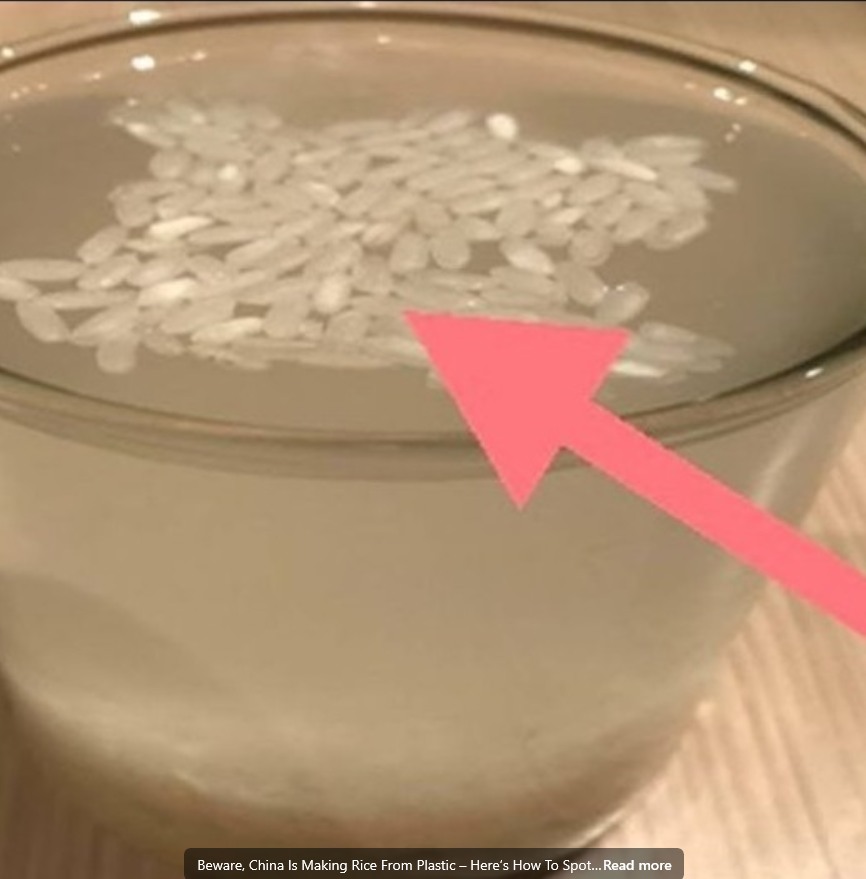ADVERTISEMENT
Certainly! Here’s an article on Identifying Plastic Rice: A Simple Guide to Protect Your Health:
Identifying Plastic Rice: A Simple Guide to Protect Your Health
In recent years, there has been increasing concern over the presence of plastic rice in some markets. Plastic rice is a potentially dangerous counterfeit product made from synthetic materials that mimic the appearance and texture of real rice. This deceptive product has been linked to health hazards and has raised alarms about food safety worldwide.
In this guide, we will explain what plastic rice is, how to identify it, and what you can do to protect yourself and your family from this harmful threat.
What is Plastic Rice?
Plastic rice is a form of fake rice made from synthetic polymers, like plastic pellets and sometimes mixed with real rice grains. It’s designed to resemble genuine rice, both in appearance and texture. Manufacturers produce plastic rice as a cheaper alternative to real rice, especially in countries where rice is a staple food.
While it may look identical to real rice when uncooked, the dangers lie in its potential health risks when consumed. The plastic used in these counterfeit grains is non-biodegradable, and ingesting it could lead to serious health complications, including digestive problems and poisoning.
Why Should You Be Concerned About Plastic Rice?
The presence of plastic rice can pose serious health risks due to the materials used in its production. Polyethylene and other synthetic compounds used in fake rice are not food-safe and can cause the following health issues:
- Digestive Problems: Since plastic cannot be digested by the human body, consuming plastic rice could lead to severe digestive issues, including blockages.
- Toxic Chemicals: Some forms of plastic contain harmful chemicals like BPA (bisphenol A) or phthalates, which can be toxic when ingested and linked to hormonal disruptions and other health concerns.
- Long-Term Health Risks: Regular consumption of plastic rice could increase the risk of long-term health problems, such as kidney damage, liver damage, or even certain types of cancer due to the potential buildup of harmful substances in the body.
How to Identify Plastic Rice: Simple Methods
Although plastic rice may appear almost identical to regular rice, there are several simple ways to identify the fake rice. Here are a few tests you can try at home:
1. The Water Test:
One of the simplest ways to identify plastic rice is by using water.
- Instructions:
- Take a handful of rice (both uncooked plastic rice and real rice if you can) and place it in a bowl of water.
- Real rice will sink to the bottom of the bowl because it absorbs water.
- Plastic rice, however, will tend to float on the surface because it is made from synthetic materials that do not absorb water.
- Why it works: The water test works because real rice grains are porous and absorb water, whereas plastic rice grains are non-porous and float.
2. The Fire Test:
Another method is the fire test, though it should be used with caution.
- Instructions:
- Take a small piece of rice and try to burn it using a lighter or a match.
- Real rice will burn and produce a typical rice odor.
- Plastic rice will melt and give off a plastic smell or even emit toxic fumes when burned.
- Why it works: Plastic rice, being made of synthetic material, will melt when exposed to heat, while real rice burns and produces ash.
3. The Appearance Test:
Plastic rice grains may not have the same shiny or smooth texture as real rice. They might appear more plastic-like or even have small seams on the edges where the grains were fused together.
- Instructions:
- Look closely at the rice. If it has an unnatural shine or seems to have uneven surfaces, it could be plastic.
- You can also crush a few grains between your fingers; real rice will break and crush easily, whereas plastic rice will remain intact.
4. The Cooking Test:
Plastic rice doesn’t cook in the same way as regular rice.
For Complete Cooking STEPS Please Head On Over To Next Page Or Open button (>) and don’t forget to SHARE with your Facebook friends
- Instructions:
